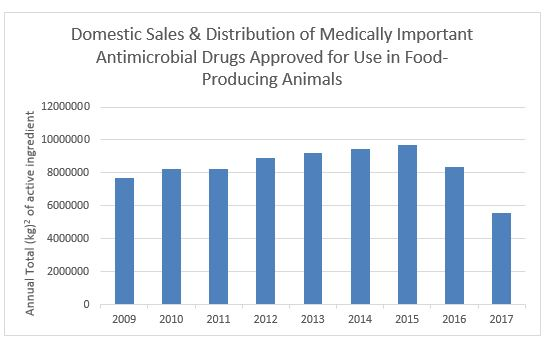By Jeffrey K. Shapiro —
The 510(k) program is based on substantial equivalence. A 510(k) submitter wishing to market a new device must establish that it is as safe and effective as a legally marketed device that has already received clearance. The baseline comparison device is known as a “predicate device.” It is permissible to rely on more than one predicate, but all elements of substantial equivalence must be established with respect to each predicate. FDA has explained the 510(k) program and substantial equivalence in more detail here and here.
FDA Is Concerned That Predicates Are Too Frequently Too Old
Recently, the Food and Drug Administration (FDA) announced a push for “predicate modernization” a “key component of promoting innovation to help patients access safe and effective treatments.” The problem was defined in these terms:
When new devices rely on older predicates, they may not be accounting for, in their new submissions to the FDA, the latest advances in technology that could benefit patients. Older predicates might not reflect the newest performance standards or the FDA’s most recent understanding of the benefits and risks associated with a type of device. We want to create policy vehicles that will move the market toward reliance on newer predicates that reflect more modern characteristics related to their safety and performance.
It was observed that “from 2015 through 2018, approximately 20 percent of 510(k)s that were cleared based on substantial equivalence to a predicate device relied on a predicate that was more than 10 years old.”
FDA acknowledged: “We don’t think these devices are unsafe—they met our standards for reasonable assurance of safety and effectiveness.” Nonetheless, FDA is “concerned that this practice of relying on predicates that are old, and may not reflect modern performance characteristics, means that some devices are not continually improving. Yet beneficial iteration is at the heart of health technology advancements that can truly benefit patients.”
As a first step, FDA will “make public information about cleared devices that demonstrated substantial equivalence to older predicate devices, focusing on those that use predicates that are more than 10 years old.”
The agency also will “seek public feedback on whether predicates older than 10 years are the right starting point and if there are other actions we should take to advance the use of modern predicates.”
What Are The Stats?
We looked at the average and median age of predicates a few years ago in an article on substantial equivalence in the Food and Drug Law Journal. As described in more detail in the article (p. 387), the review was based on a sample of two consecutive series of 100 traditional 510(k) clearances. The first series started on February 14, 2013 and the second series started on January 1, 2014 (both dates chosen at random). Out of 200 traditional 510(k) clearances, 393 predicates were cited. They had a mean age of 74 months (6 years, 2 months) and a median age of 53 months (4 years, 5 months). The min-max age range was 1 month to 353 months.
We recently repeated the review with the same methodology. We reviewed a consecutive series of 100 traditional 510(k) clearances starting on February 1, 2017, and another series starting on February 1, 2018 (both dates chosen at random). Out of 200 traditional 510(k) clearances, 369 predicates were cited. They had a mean age of 77 months (6 years, 5 months) and a median age of 50 months (4 years, 2 months). The min‑max age range was 2 months to 432 months.
It seems valid to pool these two reviews, since the same methodology was used. If so, out of 400 clearances, with 762 predicates, the mean age of the predicates was 76 months (6 years, 4 months), the median age was 52 months (4 years, 4 months), and the min‑max age range was 1 month to 432 months. This table summarizes the pooled review:
Table: Predicate Age (n=400)
| Mean |
Median |
76 months
(6 yrs, 4 mos) |
52 months
(4 yrs, 4 mos) |
What about predicates older than 10 years (120 months)? We did not look at that question in the first review, but we did so this time around, because FDA has raised the issue. In our 2017‑2018 sample, 53 clearances out of 200 clearances (27%) cited at least one predicate older than 10 years. That is somewhat higher than the 20% that FDA found. The FDA’s figure apparently is based on the entire population of clearances in 2015 through most of 2018 and is therefore most likely closer to truth.
Judging from FDA’s statement, it appears that they included in the 20% figure all clearances in which at least one predicate was older than 10 years. What about clearances relying on multiple predicates where at least one predicate was older than 10 years, but at least one predicate was also under 10 years? In our sample, out of 53 clearances with predicates older than 10 years, 27 clearances also cited at least one predicate under 10 years old. These “mixed bag” clearances amount to 14% out of total clearances. The other 26 clearances relying exclusively on predicates over 10 years were 13% of total clearances.
What Do These Data Tell Us?
What inferences can be drawn from these data? First, the age characteristics of the predicate devices in the 2017‑2018 sample are consistent with the 2014‑2015 sample. That suggests that the age distribution of predicate devices is fairly stable, and that these samples are likely to be representative of the population.
The fact that the median age of predicate devices is about 4 years establishes that 50% of all predicates are under 4 years. The mean (average) is 2 years higher, about 6 years. No doubt the average is skewed upward from the median by some especially old predicates. Nonetheless, these figures show that the center of gravity for predicates is well under 10 years.
It is a judgment call whether the “mixed bag” clearances should be considered a problem. FDA clearly thinks so, since they did not provide a separate breakdown of mixed bag clearances. But if a 510(k) submission reaches back to include a predicate that is older than 10 years, while at the same time citing a predicate that is under 10 years, can one say a priori that insufficient innovation has taken place? It would seem that one would need to examine the clearances in detail to reach an informed judgment.
A Closer Qualitative Look (Two Examples)
To provide some qualitative color to the data, we looked in detail at clearances relying on at least one predicate older than 10 years. Here are two examples:
The first device in our 2017 sample with a predicate older than 10 years was a pre‑formed penile silicone block (K162624). It cited four predicates, two dating to 2002 and two dating to 2004. Like the predicates, the cleared device is a block of medical grade silicone with an embedded polyester mesh. A physician carves a shape out of it to implant for “the cosmetic correction of soft tissue deformities in the penis.” The predicate devices were intended areas of the body other than the penis. To ensure that the new anatomical location would be safe, clinical data were collected on 100 patients out to 12 months to evaluate the risks of pain, erosion, migration, and infection. The conclusion was “that rates of pain, erosion, migration, and infection are low compared to reports of other silicone implants on the market.”
In this case, the long marketing history due to the age of the predicates potentially provides greater assurance of safety than would have been the case with a novel material. Combining that fact with the submitter’s clinical study in the new anatomical location, it is difficult to see a problem with the use of older predicates in this particular clearance.
As another example, consider a hip fracture plating system with the oldest predicate device in the pooled review, dating back 432 months to 1982 (K173826). One would think that the use of such an old predicate would be troubling. But a closer look suggests otherwise. Specifically, this device is a “set of metal plates and associated screws designed to affix to the lateral aspect of the proximal femur and provide fracture stabilization for femoral neck fractures and intertrochanteric fractures.” It turns out this device was actually cleared in 2014 (K140018). After marketing commenced, a problem emerged with screw heads breaking off, leading the manufacturer to conduct a recall. To address the problem, the manufacturer increased the length of the screw and redesigned the geometry to address the head breakage issue.
The regulatory strategy of this 510(k) submission was to cite the 2014 clearance for the same device as a predicate. Additionally, the submission cited as a predicate the manufacturer’s hip screw system cleared in 1982. This latter predicate was cited solely as support for the redesigned bone screw. Although this predicate was old, bone screws are not a device type that is evolving particularly rapidly; a bone screw designed in 1982 would still likely be fine today. Testing submitted to FDA showed that the new screw was significantly stronger than the predicate and also resolved the head breakage issue.
Obviously, these two examples do not speak to the remaining 51 devices citing a predicate older than 10 years. But they do establish that a predicate older than 10 years can sometimes be appropriate. Not all device types are realistically subject to rapid iterative improvement. One needs to look at each clearance individually to arrive at an informed judgment.
Is There A Problem?
FDA’s proposal to highlight devices with predicates greater than 10 years is not likely to cause great harm. The information is already publicly available in the 510(k) database. FDA did not explain how it will highlight the information, but presumably there will be some sort of notation in the 510(k) database or perhaps there will be a master list posted on FDA’s web site.
At the same time, we do not think the proposal is necessary. If a device type has been evolving rapidly, a submitter always has an incentive to choose the most up‑to‑date predicate possible in order to take advantage of FDA’s prior clearances and reduce the data burden. That is why our review found a strong natural slant toward more recent clearances. There are some device types that may not evolve rapidly. In these cases, there is nothing pernicious about reaching back to older predicates. It may be somewhat misleading in such cases for FDA to suggest that there is. There is also a certain tension between FDA’s proposal and its claim that the cleared devices met all standards for safety and effectiveness.
In our view, the 510(k) system is working quite well in fostering rapid iterative improvement of medical devices. The use of older predicates is not central to the 510(k) system, but it is appropriate in some cases. It does not deserve special opprobrium.











